63 F. high in the Twin Cities Tuesday.
72 F. average high on May 26.
82 F. high on May 26, 2014.
.58" rain fell at MSP International Airport yesterday.
.90" rain reported at Eden Prairie (Flying Cloud Airport).
May 26, 1929: Tornado rakes Freeborn County and causes 10,000 dollars damage to farms.
BiblicalOn
Memorial Day the National Weather Service issued a rare "Flash Flood
Emergency" for life-threatening conditions near Austin, Texas. NOAA has
been using this terminology for only 7 years. Like a "Tornado Emergency"
it implies an even greater danger and urgency than a warning.
Much of Texas is experiencing historic flooding; the same counties that were in a severe drought just 3 weeks ago.
When
skeptics say "What's a few degrees among friends?" or "CO2 is plant
food, Paul!" I point them to new research showing a growing link between
rapid Arctic warming and weather-whiplash, along with shifts in the jet
stream.
There's early evidence that weather systems are deeper,
moving slower, especially during the summer months. Storms and fronts
seem more prone to getting "stuck". When weather stalls bad things can
unfold, debilitating droughts, stronger heatwaves and mega-floods.
Yesterday's
storm stalled over Minnesota, putting another big dent in our drought.
If this keeps up most of Minnesota may be drought-free by mid-June.
Get ready for a summer-sandwich: 80s today &
Thursday; again much of next week. Sandwiched in-between: a cooler, drier, sunnier weekend is brewing.
Photo credit above: "
Flood
waters cover Memorial Parkway near downtown Houston, May 26, 2015.
Flooding brought Houston to a near-standstill Tuesday and killed as many
as five people, sending normally tame rivers and bayous surging past
their banks, inundating streets and homes, and leaving roadways littered
with thousands of abandoned, ruined cars." (Michael Stravato for The New York Times).
Late May Soaker.
The models pretty much blew yesterday's forecast, meaning local
meteorologists (myself included) pretty much blew the forecast as well.
The stormy spiral stalled overhead instead of pushing east, prolonging
moderate rain, with some 1 to 1.5" rainfall amounts from Bloomington and
Edina to Shoreview. At this rate we may be drought-free, at least in
the metro, as early as next week.
Multi-Million-Dollar Rainfall Event.
Check out some of the Doppler radar rainfall estimates east of the St.
Croix, as much as 2-3" near Durand. Much of eastern and southern
Minnesota picked up .75" to 1.25" of rain on Tuesday. Soil moisture is
now adequate to slightly above average across southern Minnesota and
farmers are breathing a little easier, assuming - of course - that it
dries out enough for them to get back into their fields.
Instant Summer.
Yesterday was rainy and raw, like something out of early April or late
October. Today will feel like the second week of July with warm sun, low
to mid 80s, and a light westerly breeze. Humidity levels increase
tomorrow, low 80s likely before showers and T-storms cool us back down
late Thursday into Friday. We dry out and cool off behind a cool front
over the weekend with highs stuck in the 60s, but a taste of mid-summer
returns next week with a few 80s, even a severe storm outbreak possible
by midweek.
Weather-Whiplash: Texas Goes From Extreme Drought to Floods in 3 Weeks. Meteorologist Andrew Freedman takes a look at how what's happening in Texas fits recent trends; an excerpt of a story at
Mashable:
"...Murphy says that in Texas, the drought of record, before the more
recent one that just ended, occurred in the 1950s. A series of storms in
1957 brought that drought to an abrupt end in much the same way that
the current rains are doing, although today's deluges are more severe in
some instances than what took place then. Many climate studies have
found that as the world warms in response to rising levels of manmade
greenhouse gases, heavy precipitation events are getting more frequent
and intense. This is true in the South Central states, but it's most
pronounced in the Northeast and Midwest..."
Photo credit above: "
The
cement stilts of the home belonging to the Carey family of Corpus
Christi, Texas, are all that remain the home was swept away by the
Blanco River early Sunday morning during a flash flood in Wimberley,
Texas, on Monday, May 25, 2015. The Carey and McComb family, from Corpus
Christi, Texas, have been missing since." (Rodolfo Gonzalez/Austin American-Statesman via AP)
Catastrophic Flooding Sweeps Away Homes, Breaks Records.
ThinkProgress has some perspective on the extreme case of weather-whiplash impacting Texas and the southern Plains; here's an excerpt: "...
Going
from one extreme to another is a hallmark of climate change. Scientists
predict more droughts in the coming decades, as well as more intense
rainstorms. In the midwest, the number of storms that drop more than
three inches of rain have increased by 50 percent, according to an analysis
from the Rocky Mountain Institute. Texas and Oklahoma both face
intensifying drought and flooding, although politicians in both states
have denied climate change..."
Photo credit above: "
With
downtown Dallas in view, water from the Trinity River floods the area
below the Sylvan Avenue bridge Monday, May 25, 2015, in Dallas. Several
people were reported missing in flash flooding from a line of storms
that stretched from the Gulf of Mexico to the Great Lakes." (Louis DeLuca/The Dallas Morning News via AP).
 Rubbing Salt in the Wound
Rubbing Salt in the Wound.
Now Mother Nature is just piling on - no mercy for residents of Texas
and Oklahoma anytime soon as a nearly stationary weather system sparks
additional rounds of heavy showers and T-storms. GFS guidance hints at
another 3-6" for Tulsa and Oklahoma City by the weekend; some .5 to 1"+
amounts possible across Minnesota and Wisconsin on Friday of this week.
Source: NOAA and AerisWeather.
Floods Bring Death and Destruction to Texas and Oklahoma. The New York Time
reports.
Texas Governor Calls Flood Damage "Devastating".
About 3 weeks ago most of Texas was still suffering from extreme
drought. And then, like turning on a light switch, the rains came, and
wouldn't let up. Here's the intro to an
NPR story: "
Texas
Gov. Greg Abbott is calling the flood damage in the central part of his
state "absolutely devastating." Abbott flew over parts of the Blanco
River today, a day after storms triggered flooding. The hardest-hit
communities were Wimberley and San Marcos. Abbott added 24 counties to
the disaster declaration he issued earlier this month to help
communities overwhelmed with heavy rains and tornado damage..."
Photo credit above: "
In
this aerial photo a barn with a Texas flag painted on its roof is
surrounded by water near Martindale, Texas, after the San Marcos River
flooded, Sunday, May 24, 2015. Record rainfall was wreaking havoc across
a swath of the U.S. Midwest on Sunday, causing flash floods in normally
dry riverbeds, spawning tornadoes and forcing at least 2,000 people to
flee." (Rodolfo Gonzalez/Austin American-Statesman via AP).
Texas Is Paying The Price For Its Lack of Flood Infrastructure.
CityLab has the story - here's an excerpt that caught my eye: "...
The state does not participate in the National Flood Insurance Program
(a part of FEMA), even though Texas ranks second only to Florida in its
number of total flood insurance policies across its communities.
Wherever possible, the state leaves it to individual cities and counties
to protect themselves against flooding. While Texas doesn’t participate
in NFIP, many of its individual communities do. Texas doesn’t fund any
flood-control infrastructure directly. And Texas doesn’t have a
statewide floodplain management plan..."
Photo credit above: "
Residents navigate a flooded street in Houston." (David J. Phillip/AP)
Tornado Kills 13 in Mexico - State of Emergency Declared for 24 Texas Counties.
Australia's ABC Network
has additional information on the rash of severe weather, including
rare killer tornadoes near the Mexican border with Del Rio and almost
biblical flooding for the southern Plains, with Texas hardest hit: "
The
savage twister roared through the Mexican border town of Ciudad Acuna
at dawn, tossing cars and big rig trucks into the air before they
smashed into houses and buildings. Images from the aftermath of the
tornado showed several crumpled vehicles resting against walls and roofs
as shell-shocked inhabitants of the town of 136,000 struggled to make
sense of the devastation. The tornado came as ferocious weather battered
swathes of Mexico and the southern United States, where rescuers
searched for 12 people missing in flash floods across Texas and Oklahoma
that left three people dead..."
Photo credit above: Ramiro Gomez, Reuters.
Severe Weather May Be Linked To Arctic Warming.
More potential evidence that rapid changes in the Arctic may be
impacting the speed and configuration of the jet stream, something I've
been talking about for 15 years. Here's an excerpt from
ScienceDaily: "...
They
have found that while it is too soon to know for certain whether the
Arctic played a role in persistent cold events during the extreme wet UK
winter of 2013/14 and recent USA East Coast winters, new studies are
adding to the growing weight of evidence linking increased Arctic
temperatures with changes in mid-latitude weather patterns. The research
published in the Journal of Climate by Professor James Overland of the
National Oceanic and Atmospheric Administration (NOAA) and authors from
North America, Asia and Europe, including Professor Hanna and Richard
Hall, paints a picture of links that vary by region and season..."
With San Diego Again Drought-Ridden, 1915 "Rainmaker" Saga is Revisited.
Beware of snake oil salesmen, even when their magical cure appears to
work. Sometimes it works too well. Here's an excerpt of a curious tale
from
The Los Angeles Times:
"...For $10,000, Hatfield promised to produce enough rain to fill the
city's depleted reservoirs. The otherwise fiscally conservative City
Council agreed — although one councilman called the idea "foolishness."
Hatfield and his younger brother built a 20-foot tower in the deep woods
east of the city and began what one city official would later call "an
incantation aimed at wringing moisture from the air." Smoke drifted
skyward. What followed in January and early February of 1916 was a
downpour — 30 inches of rain by some estimates..."
Image credit above: "
Charles
Hatfield (on the ladder) and his younger brother built a 20-foot tower
in the woods east of San Diego and began what one city official would
later call “an incantation aimed at wringing moisture from the air.”
What followed was a destructive downpour."
8 days of record-breaking heat in Canada's Yukon. The CBC has
details.
India Heatwave Kills 800 As Roads Melt.
Sky News has the harrowing details - here's a clip: "...
At
least 800 people have died in a major heatwave across India, melting
roads in New Delhi as temperatures neared 50C. Hospitals are on alert to
treat victims of heatstroke and authorities advise people to stay
indoors with no end in sight to the searing conditions. In the worst-hit
state of Andhra Pradesh, in the south, 551 people have died in the last
week as temperatures hit 47C on Monday..."
* More details on India's heatwave can be found
here, courtesy of Huffington Post.
Sleeping With The Seasons: See How Weather Influences Your Sleep. I got a few interesting nuggets of information from this story at
Huffington Post; here's the intro: "
Have
you ever noticed that different times of year or certain weather
patterns influence how you feel or how well you sleep? Though many
aspects of achieving good sleep are under our control, one
often-overlooked factor is the outside environment. Changes to
temperature, atmospheric pressure, humidity and precipitation influence
us in many ways, both positive and negative..."
At least 800 people have died in a major heatwave across India, melting roads in New Delhi as temperatures neared 50C.
Hospitals
are on alert to treat victims of heatstroke and authorities advise
people to stay indoors with no end in sight to the searing conditions.
In the worst-hit state of Andhra Pradesh, in the south, 551 people have died in the last week as temperatures hit 47C on Monday.
-
See more at:
http://www.skynews.com.au/news/top-stories/2015/05/26/india-heatwave-kills-800-as-roads-melt.html#sthash.XKI2zr9B.dpuf
Logging and Commercial Fishing Deadlier Professions Than Police Patrol Officers? The stuff you learn on the interweb. Here's an excerpt from
Quartz: "...
This
weekend, Americans will remember their fallen soldiers, a holiday
traditionally observed with barbecues and the Indianapolis 500 car race.
The US military isn’t the only industry that often asks the ultimate
sacrifice of its workers. Some 4,585 American civilians died in the line
of duty in 2013, according to data from the Bureau of Labor Statistics (pdf). Certain jobs in particular are alarmingly risky..."
What If Everybody Didn't Have To Work To Get Paid?
With automation, outsourcing and the rise of the robots the question
may become more relevant and timely in the years to come. Here's an
excerpt from a story at The Atlantic: "...Many experts believe that, unlike in the 20th century, people in this century will not be able to stay one step ahead of automation through education and the occasional skills upgrade. A recent study from Oxford University warns that 47 percent
of all existing jobs are susceptible to automation within the next two
decades. Worries about robots replacing human labor are showing up more
frequently in the mainstream media, including the front page of The Wall Street Journal..."
Halo WX Warns of Smoke, Fire...and Tornadoes. Here's an excerpt of a story at Gizmag that caught my eye. Call me crazy but this makes sense to me: "...The
feature that really makes this device stand out is the ability to
receive major natural disaster alerts on a smoke alarm. This might seem
redundant in the age of cell phones and the internet, but often during
major events cell phone signal stops working and power goes out. This
feature would allow someone who is stranded in their home to still find
out if another tornado was on the verge of touching down in their area,
even without TV or internet..."
California Dreaming: Half a Billion Dollars for One L.A. Home?
Yes, that's for one home, which is really one big hotel-like home and 3
smaller homes. Where the serfs will live. This takes wretched excess to
a whole new level; here's an excerpt from
Bloomberg Business: "...
Nile
Niami, a film producer and speculative residential developer, is
pouring concrete in L.A.’s Bel Air neighborhood for a compound with a
74,000-square-foot (6,900-square-meter) main residence and three smaller
homes, according to city records. The project, which will take at least
20 more months to complete, will exceed 100,000 square feet, including
a 5,000-square-foot master bedroom, a 30-car garage and a “Monaco-style
casino,” Niami said. “The house will have almost every amenity
available in the world,” he wrote in an e-mail. “The asking price will
be $500 million...”
Image credit above: "
Rendering of Niami's under-construction mansion in L.A.’s Bel Air neighborhood." Source: McClean Design via Bloomberg.
Minnesota: Land of 10,000 Dessert Salads. Yes, this touched a nerve, and made me even hungrier.
Atlas Obscura takes a look at one of our big obsessions; here's a clip: "...
Snickers salad is not a creation of just one family, but a Minnesota standard, just one of a surprisingly large variety of "dessert salads"
which maintain their place in the pantheon of Minnesota cuisine. These
are desserts not often seen in the rest of the country, desserts
consisting of various sweet things, typically pre-made or shelf-stable
items like packaged cookies or canned fruit, suspended in a sweet
housing of pudding, Cool Whip, whipped cream, Jell-O, or permutations
thereof. But why dessert salads? And why Minnesota?..."
TODAY: Instant July. Touch of fog early, then warm sunshine. Winds: W 5-10. High: 84
WEDNESDAY NIGHT: Partly cloudy - feels like summer. Low: 63
THURSDAY: Sticky sun, T-storm at night. High: 81
FRIDAY: Lingering showers & T-storms. Wake-up: 62. High: 73
SATURDAY: Comfortable sunshine, cooling off. Wake-up: 49. High: 62
SUNDAY: Pass the sunscreen. Cool start. Lot's of sunshine. Wake-up: 45. High: 69
MONDAY: Some sun, sticky humidity levels. Wake-up: 51. High: 75
TUESDAY: Steamy sun, T-storms up north. Wake-up: 60. High: 83
Climate Stories....
Yet Another Antarctic Ice Mass Is Becoming Destabilized, Scientists Report. Chris Mooney has the details at
The Washington Post; here's an excerpt: "...
And the staccato of May melt news isn’t over, it seems. Thursday in Science,
researchers from the University of Bristol in Britain, along with
researchers from Germany, France and the Netherlands, reported on the
retreat of a suite of glaciers farther south from Larsen B and C along
the Bellingshausen Sea, in a region known as the Southern Antarctic
Peninsula....Using satellite based and gravity measurements, the
research team found that “a major portion of the region has, since 2009,
destabilized” and accounts for “a major fraction of Antarctica’s
contribution to rising sea level...” (Map credit
here).
Has The Last Human Trekked To The North Pole? National Geographic takes a look - here's a snippet of a recent (eye-opening) story: "
Faced
with a dearth of logistical support and challenges related to climate
change, human-powered trips to the North Pole may be on the brink of
extinction. "North Pole expeditions are going the way of the passenger pigeon," says Eric Larsen, a Colorado-based polar explorer who has completed three North Pole expeditions..."
Photo credit above: "
Polar
explorer Thomas Ulrich skis across a melt pond on sea ice near Champ
Island, in Russia's Franz Josef Land, in 2009. Climate change is making
Arctic ice melt faster, making it more perilous to cross." Photograph by Borge Ousland, National Geographic.
Shell's CEO Says We Can't Burn Fossil Fuels in an "Unmitigated Way".
VICE News has more details; here's a snippet of a recent article: "
The
CEO of energy giant Royal Dutch Shell has said that the carbon dioxide
released by burning fossil fuels must be captured and stored in the
ground if the world is going to avoid potentially catastrophic levels of
global warming. "We cannot burn all the hydrocarbon resources we have
on the planet in an unmitigated way and not expect to have a CO2 loading in the atmosphere that is often being linked to the 2C scenario," Ben van Beurden, Shell's chief executive, told the Guardian..."
Only Capitalism Can Save The Planet.
Market forces got us here - market forces can correct the (carbon)
imbalance and encourage alternatives, stimulating the
innovation/revolution we're going to need to grow economies and
employment while putting less stress on Earth's climate system; here's
an excerpt from
The Daily Beast: "...
It
may seem unusual for a leading environmentalist to place his faith in
the power of capitalism to move the country, and indeed the world, away
from the cheap oil and coal economy that has powered America’s economic
success since the Industrial Revolution. Brown does hedge, writing in
his new book, The Great Transition, that no one can say with any
certainty that the change that’s underway will proceed fast enough to
avoid catastrophic climate change..."
Dutch Sea Level Rise Expert: Miami Will Be "The New Atlantis", A City In The Sea.
No, it won't happen overnight, or even in our lifetime, but according
to many experts Miami and south Florida in general may be the first to
feel the full effects of sea level rise. Here's an excerpt from
Miami New Times: "...
Which
is all to say that there aren't many people alive who know more about
helping threatened cities cope with sea level rise. So there's good
cause to be worried when the Dutch expert says there’s no place in worse
shape today than Miami. He’s begun calling the city “the new Atlantis,”
after the legendary and beautiful island subcontinent that was
submerged by the sea in one night. “If we look around the world and take
into account sea level rise and the increase of water related
disasters, among the places in the world that have the most assets and
investments at risk, Miami is leading that list,” Ovink tells New Times.
“Miami will no longer be a land city, but a city in the sea...”
Photo credit above: "
Experts say South Beach could be underwater in 100 years." Photo by Marc Averette, used under a Creative Commons license.
Editorial: Florida Needs Action on Climate Change. Here is a clip from an Op-Ed at
The Tampa Bay Times Editorial Board: "...
This
is in keeping with a governor who has shown no appreciation for
Florida's fragile ecosystem. It comes years after a state inter-agency
report found that sea levels are rising and "likely to rise faster as
each decade passes," requiring much of the infrastructure of coastal
Florida to be replaced. In Miami, high tides push floodwaters onto
Biscayne Boulevard and Ocean Drive. In St. Augustine, as the AP reports,
the city's old town floods nearly once a month on average, putting
historic landmarks and the tourism industry at risk..."
Photo credit: AP. "
Certain
neighborhoods like this one in Miami regularly experience flooding
during heavy rains and extreme high tides. National and regional climate
change risk assessments have used the flooding to illustrate the Miami
area’s vulnerability to rising sea levels."
What Obama Means When He Calls Climate Change a National Security Threat. Here's an excerpt of a Dave Roberts piece at
Vox: "...
Climate
change doesn't directly cause, say, armed conflicts. It raises the
probability of armed conflicts, by increasing the likelihood of drought,
water and food shortages, and forced migrations. It remains to be seen
whether this gambit will be politically effective. Lots of people have
high hopes for this messaging — and have for a long while — but whatever
its effects inside the military, it hasn't changed the political
valence of the climate issue in any discernible way..."
CryoSat Detects Heavy Antarctic Ice Loss. Gizmag has more details; here's an excerpt: "
The
ESA CryoSat mission has detected significant ice loss in a usually
stable Antarctic region. The data recorded by the satellite revealed how
multiple glaciers along the Southern Antarctic Peninsula started
shedding ice in the 2009, with no prior warning. The findings were made
by researchers from the University of Bristol in the UK. While studying
the data captured by the ESA's ice mission, the team found that the
glaciers have been losing ice at a rate of around 60 cubic km (14.4
cubic miles) per year..."
Oil Companies Look To Join Climate Debate.
Amazingly, the path to putting some sort of price on carbon may come
from the fossil fuel companies themselves. Here's an excerpt from a
story at
The Wall Street Journal: "...
For
years, a number of shareholder activists have urged companies to curb
emissions. More recently, some big investors are taking global warming
into consideration in their portfolio building. The Church of England
and Norway’s sovereign-wealth fund, one of the world’s biggest
institutional investors, have sold off shares in pure-play coal
companies. At the same time, some of these companies’ own shareholders
are pushing them to scale back their dependence on carbon-based fuels,
worried about the future financial impact of heightened global-warming
regulation..." (AP Photo/Jin Lee, File).
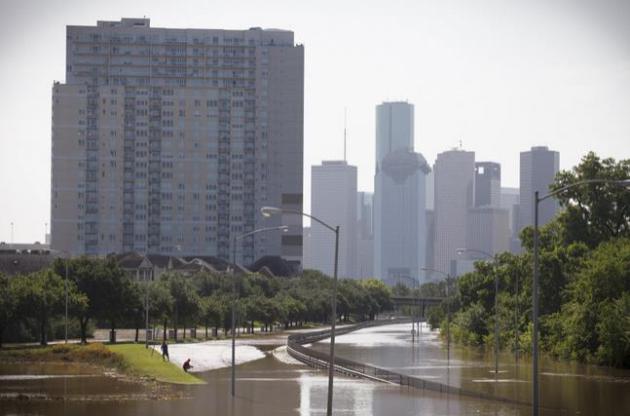
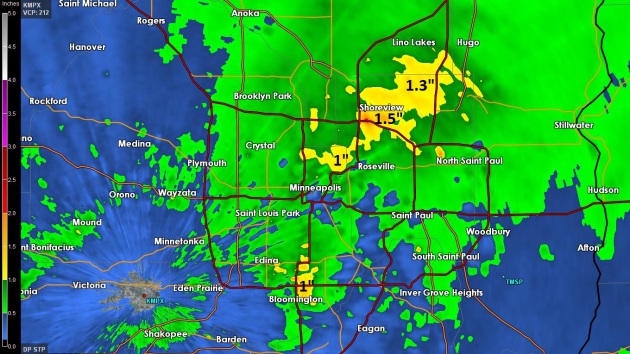
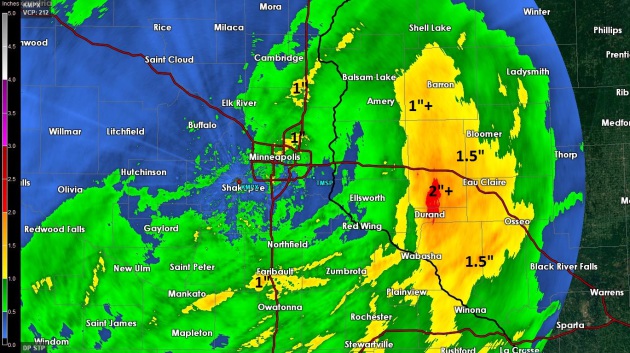
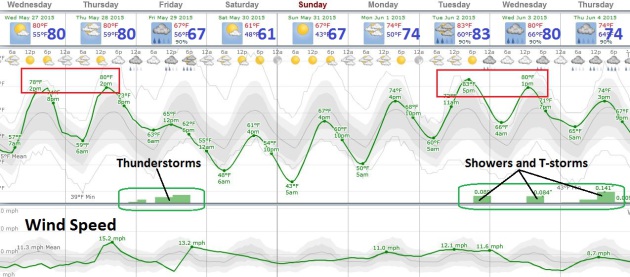
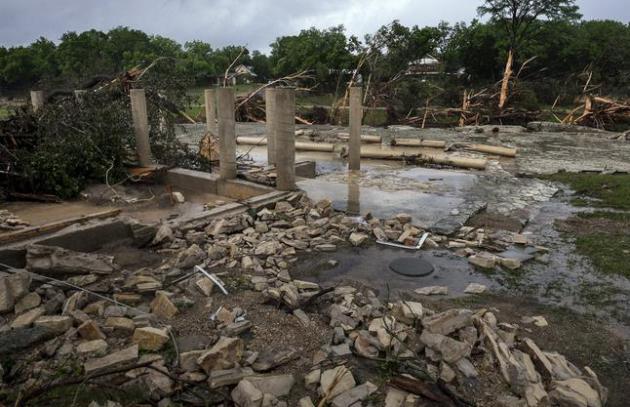
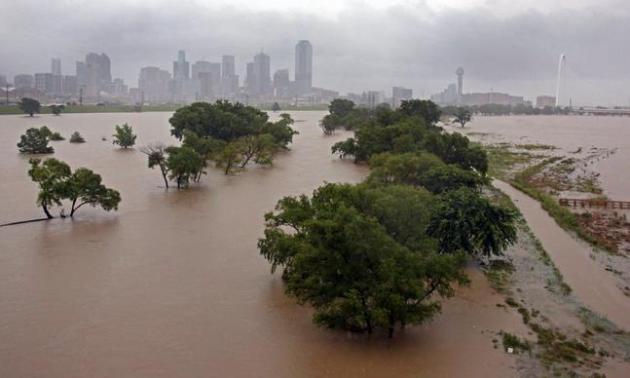
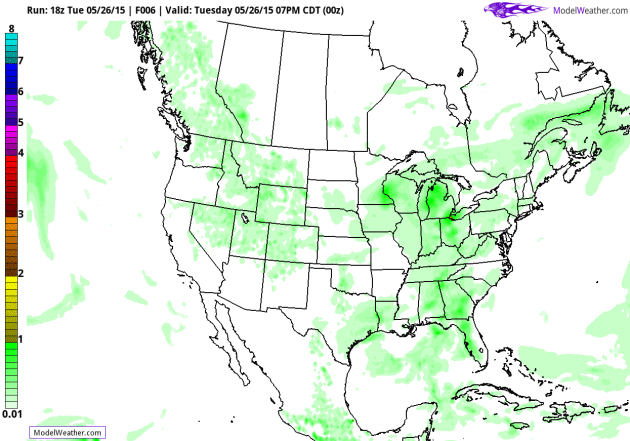
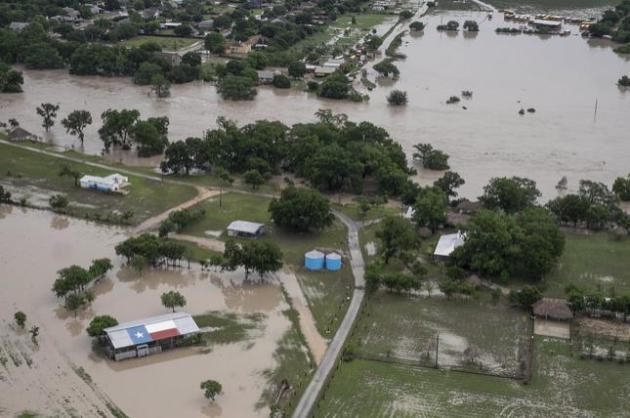
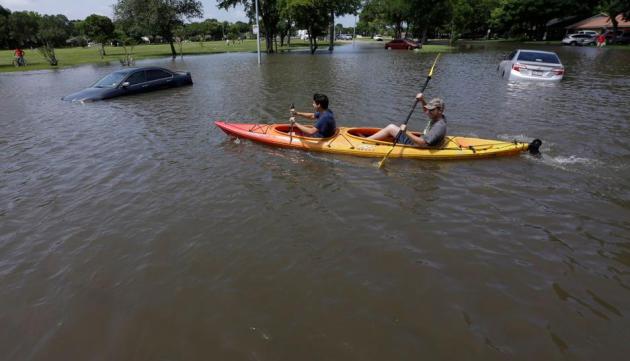
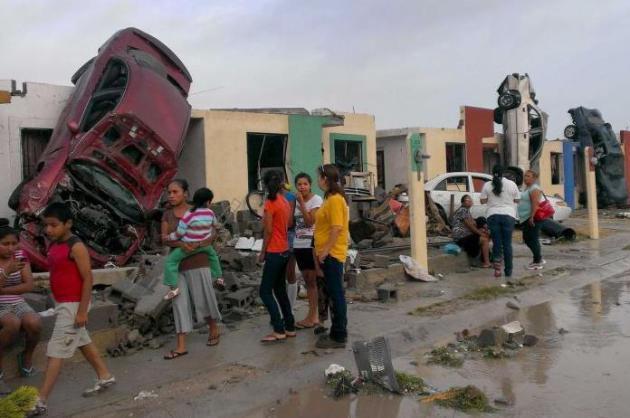









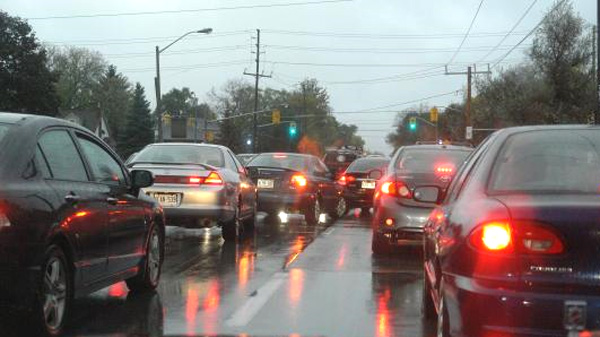
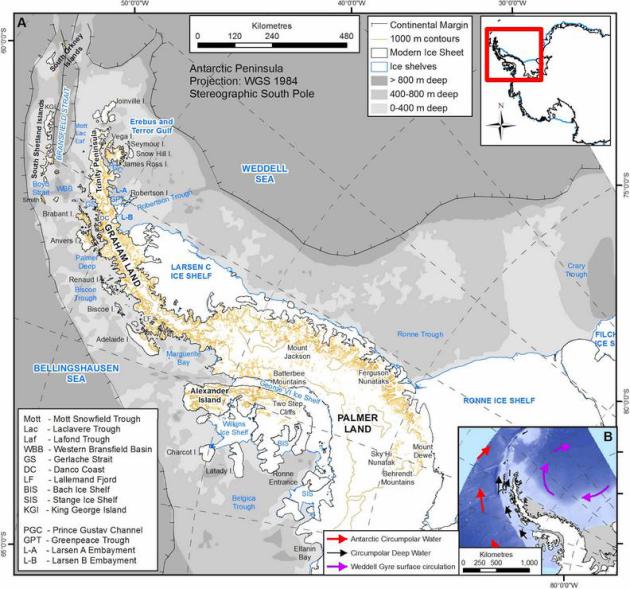
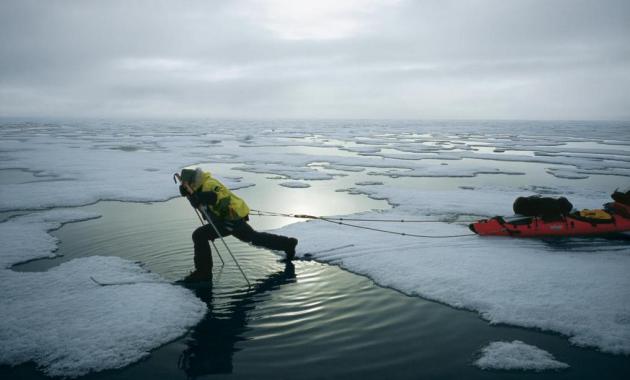



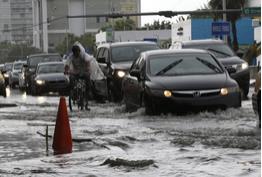

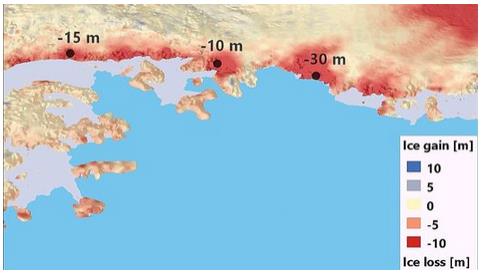

No comments:
Post a Comment